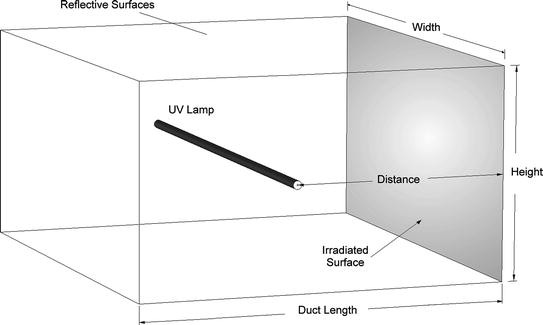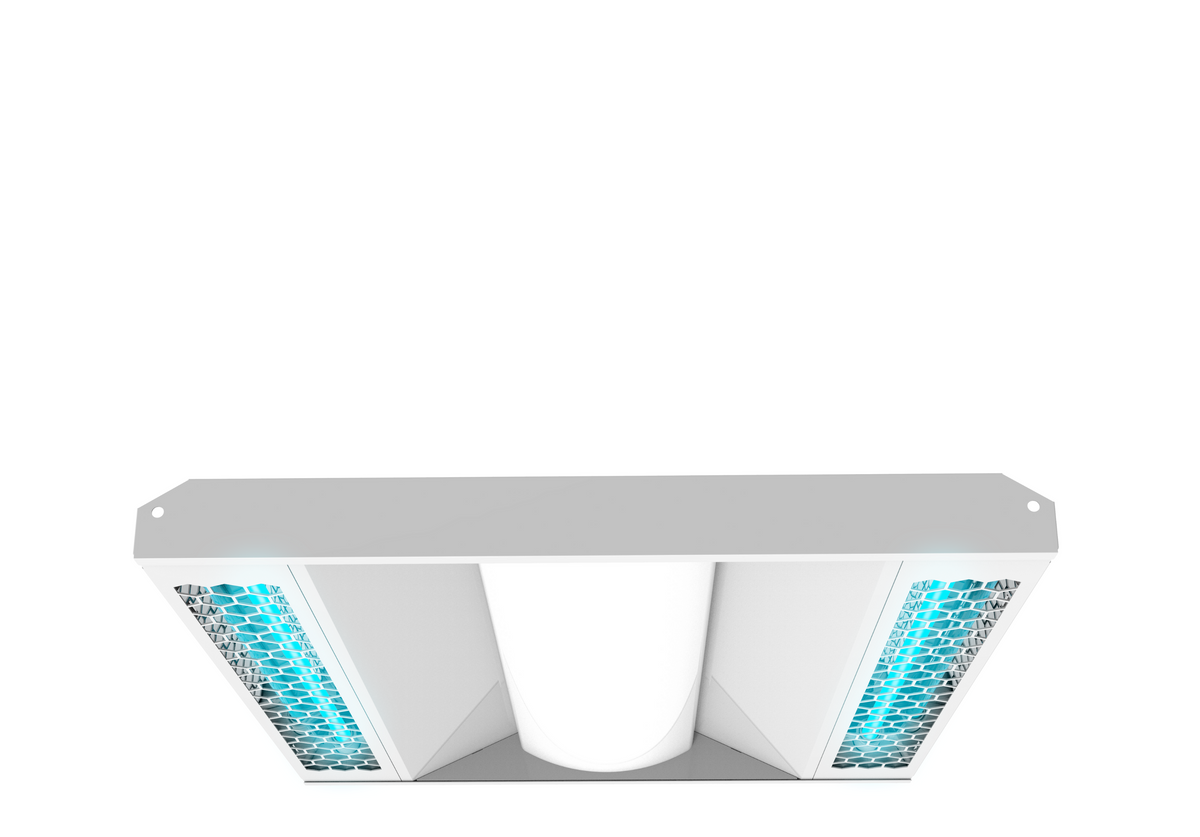Future-Proofing Your Space: Integrating UV Surface Disinfection for Ongoing Security
Future-Proofing Your Space: Integrating UV Surface Disinfection for Ongoing Security
Blog Article
Harnessing the Possible of UV Sanitation: Safeguarding Health and Health
UV sanitation, a modern technology widely made use of in different markets, has actually proven efficient in eliminating dangerous pathogens. From comprehending the systems at play to applying this modern technology in our daily lives, this conversation intends to drop light on the capacity of UV sanitation and its function in protecting our wellness and health.
Recognizing UV Disinfection
UV disinfection is a highly reliable and commonly used approach for making sure and eliminating damaging microorganisms wellness and health. This technique makes use of ultraviolet (UV) light to suspend microorganisms by damaging their DNA and preventing them from duplicating. UV sanitation is particularly efficient against microorganisms, infections, and various other microorganisms that can trigger illness and infections.
The principle behind UV sanitation is basic yet effective. UV disinfection can be applied in different settings, consisting of water treatment plants, health care centers, food handling markets, and air purification systems.
One of the benefits of UV disinfection is its capability to successfully and effectively eliminate a wide variety of pathogens without the demand for chemicals or additives. Unlike various other disinfection approaches, such as chlorine or ozone, UV disinfection does not present unsafe spin-offs or chemical deposits into the environment. Additionally, UV disinfection is a non-contact procedure, which implies that it does not require physical call with the bacteria, decreasing the risk of cross-contamination.

The Scientific Research Behind UV Disinfection
The efficiency of UV disinfection lies in its capacity to interrupt the genetic product of bacteria, providing them incapable to duplicate and therefore removing their dangerous possibility. UV, or ultraviolet, radiation is a type of electro-magnetic radiation with wavelengths much shorter than noticeable light. It is classified right into three kinds: UV-A, uv-c, and uv-b. UV-C radiation, particularly, has the quickest wavelength and the highest energy. This high-energy UV-C radiation is most effective in sanitation applications due to the fact that it can pass through the cell wall surfaces of microbes and damage their DNA or RNA.
When microbes are exposed to UV-C radiation, the energy is absorbed by their hereditary material, triggering bonds to damage and forming chemical responses that disrupt their capability to recreate. This prevents the microbes from spreading out and reproducing infection. UV sanitation is specifically effective against infections, fungi, and microorganisms, consisting of usual pathogens such as Escherichia coli, Salmonella, and Flu.
The science behind UV sanitation is supported by considerable research study and research studies. It has been revealed that exposure to an adequate dosage of UV-C radiation can attain a high degree of sanitation, usually exceeding 99.9% effectiveness in killing bacteria. It is important to keep in mind that the efficiency of UV sanitation depends on numerous variables, including the strength of UV-C radiation, direct exposure time, distance from the UV source, and the susceptibility of the microorganism to UV radiation (uv surface disinfection).
Applications of UV Sanitation
Provided the extensive research and efficiency of UV disinfection in interfering with the hereditary product of bacteria, it is very important to check out the numerous functional applications of this technology. UV sanitation has actually proven to be a valuable tool in a broad array of sectors where maintaining a safe and tidy atmosphere is necessary.
One major application of UV disinfection is in healthcare setups. UV light can be utilized to disinfect surface areas, devices, and also the air in hospitals and medical centers. This assists to lower the danger of healthcare-associated infections and guarantees a safer atmosphere for individuals and health care workers.
One more important application remains in the food and beverage market. UV sanitation is made use of to treat water and eliminate unsafe pathogens, such as E. coli and Salmonella, from the production procedure. uv surface disinfection. This guarantees the security and top quality of the products we consume
UV disinfection is likewise commonly utilized in water therapy plants and wastewater treatment centers. It is an effective method for ruining unsafe bacteria, infections, and parasites that can be present in water resources. This aids to offer tidy and secure drinking water to areas and safeguard the atmosphere from air pollution.
In addition, UV sanitation is utilized in the pharmaceutical sector to sterilize tools and maintain the integrity of items. It is also made use of in labs and research centers to avoid contamination and guarantee exact results.
Benefits of UV Sanitation Technology
One significant advantage of employing UV sanitation innovation is its capability to effectively get rid of bacteria without making use of rough chemicals. This is particularly helpful in different setups, such as healthcare facilities, water treatment plants, and food handling industries, where the visibility of unsafe virus positions a considerable danger to public health and safety.
Unlike standard disinfection methods that rely upon chemicals like chlorine or ozone, UV disinfection technology makes use of ultraviolet light to target and ruin the DNA of bacteria, efficiently neutralizing their ability to recreate and cause infections. This procedure not only removes the demand for possibly hazardous chemicals yet additionally lowers the danger of chemical residue or byproducts remaining in the cured environment.

In addition, UV disinfection technology is environmentally pleasant. As it does not rely on using chemicals, it gets rid of the need for their disposal, production, and transport, decreasing the general carbon footprint connected with disinfection processes. Additionally, UV disinfection systems have a longer lifespan contrasted to chemical-based methods, causing much less constant substitute and additional lowering waste.
Executing UV Sanitation in Daily Life
To efficiently apply UV sanitation in everyday life, companies and individuals can include mobile UV sanitizing gadgets right into their health regimens and cleaning up practices. These tools are designed to emit ultraviolet light, which has been verified to kill or inactivate site web a large range of microbes, including check these guys out bacteria, fungi, and infections. By utilizing mobile UV sterilizing devices, individuals can decontaminate frequently touched surfaces and objects, such as mobile phone, doorknobs, laptops, and secrets, lowering the danger of spreading bacteria and infections.
Along with including mobile UV disinfecting gadgets, it is necessary to follow correct guidelines and suggestions for reliable UV disinfection. This consists of making sure that the device is used correctly and for the suggested duration to achieve optimal disinfection results. It is also crucial to prioritize precaution, such as putting on safety eyeglasses and staying clear of straight exposure of the UV light to the skin.

Moreover, companies can implement UV disinfection technology in various setups to enhance health methods. For example, hospitals and medical care centers can use UV sanitation robotics to sanitize client spaces, operating cinemas, and other high-touch locations. Food processing sectors can incorporate UV sanitation systems into their assembly line to enhance food safety and avoid contamination.
Verdict
In verdict, UV sanitation technology holds terrific prospective in guarding health and wellness and health. With its numerous advantages, UV disinfection is a valuable tool for keeping a clean and healthy setting.
Unlike other disinfection methods, such as chlorine or ozone, UV disinfection does not present damaging by-products or chemical residues into the environment. It is vital to keep in mind that the efficiency of UV disinfection depends on various variables, consisting of the strength of UV-C radiation, exposure time, distance from the UV source, and the vulnerability of the microorganism to UV radiation.
An additional advantage of UV sanitation modern technology is its capacity to offer continuous and quick disinfection. Unlike handbook cleansing link techniques, which can be time-consuming and call for substantial labor, UV disinfection systems can be automated and operate continually, making sure consistent disinfection without human treatment.To successfully apply UV disinfection in everyday life, companies and people can integrate mobile UV disinfecting devices right into their health routines and cleaning practices.
Report this page